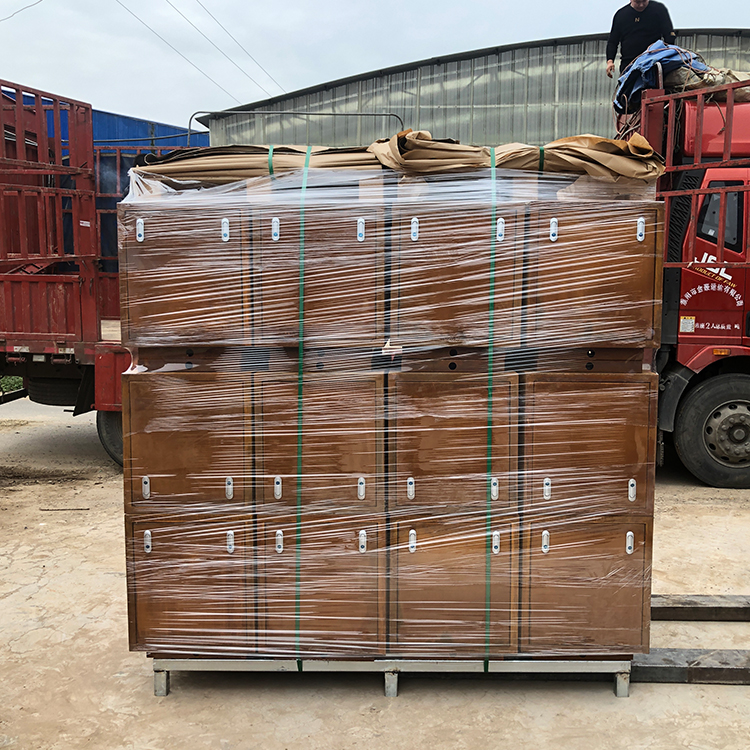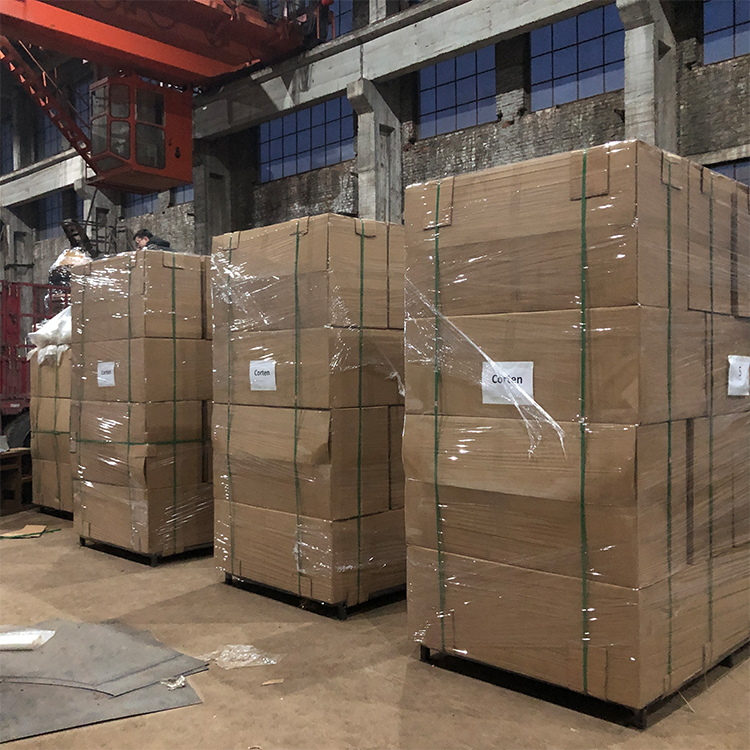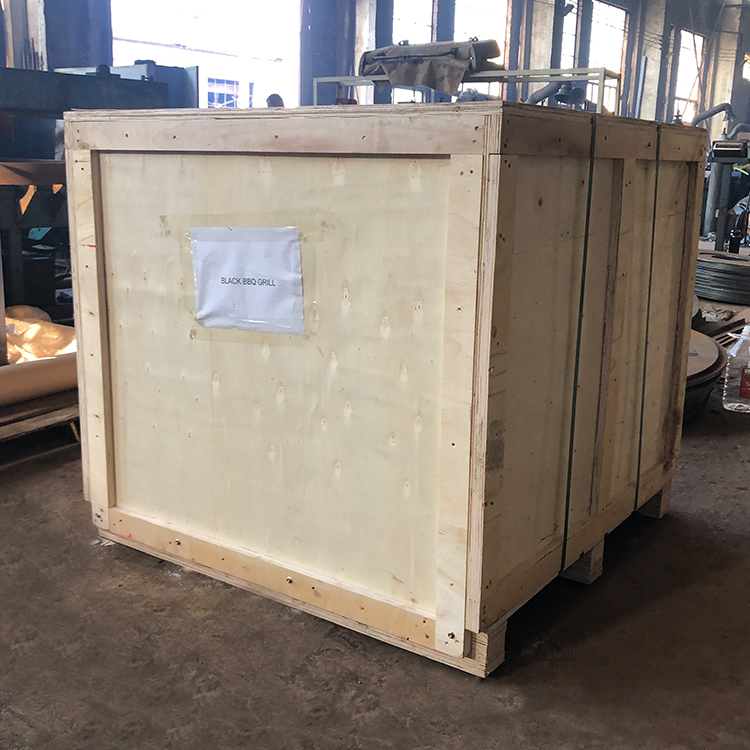Soybean oil based inks are increasingly used due to their outstanding environmental characteristics.
The development trend of the world's green packaging industry is continuously affecting the development of China's printing industry. With the continuous improvement of environmental protection requirements in printing and packaging in China, environmental protection regulations related to the printing industry are continuously improving, and environmental protection inks are increasingly being printed. The factory favored. With the advancement of technology and the development of the market, China's ink manufacturing industry has made considerable progress in recent years, among which the market demand for lithographic offset printing ink, which dominates the market, has remained steadily increasing. However, compared with internationally developed regions, there is still a big gap between the research and development of inks and the production process, the problem of environmental pollution in the printing shop, and the improvement of the environmental performance of inks. All these are printed in China. The development of industry has brought great challenges and opportunities. As one of the development directions of environment-friendly offset printing inks, soyoil-based inks have the advantages of reducing the printing ink VOCs, using renewable resources, etc., and can meet the green environmental protection requirements of the printing and packaging industry. This article will introduce the technical characteristics of this ink and its development trend.
Background introduction
In the mid-1970s, due to the increase in oil prices, the supply of raw materials severely affected the development of the ink industry. In 1979, the American Newspaper Association initiated the development of a new vegetable oil-based printing ink to replace petroleum-based printing inks. The original soybean oil-based ink was mainly used for rotary newspaper printing. With the continuous development of ink technology, soy oil can be used in sheet-fed offset printing, thermosetting rotary printing, cold-solid rotary printing, and commercial form printing. Base ink. In recent years, with the increase of environmental protection concepts and awareness of printing, environmental-friendly soy-oil-based inks have received increasing attention from printers. Japan began promoting the use of soyoil-based inks in 1995. By 1998, the consumption of soyoil-based inks had reached 859 tons. At present, there are 230 ink factories in Japan that produce soy inks and are used by 175 printing plants. The United States is the world’s largest soybean oil-based ink market. Currently, one-third of its newspapers use soyoil-based inks, and more than 90% of color newspapers use soyoil-based inks.
According to the provisions of the American Soybean Oil Association, the content of soybean oil in soybean oil based ink formulations must meet certain standards. Table 1 shows the American Soybean Association soybean oil content standard.
At present, several major ink manufacturers in China have also introduced environmentally friendly soyoil-based inks, among which are TOH-AFSOY aromatic-free soyoil-based thermoset offset printing inks for Tianjin Toyo Ink, and EXCEL SOYA, BCSOYA, and HS for Hanghua inks. G SOYA environment-friendly soybean oil ink series, Shanghai Peony Ink's PSE series of aromatic-free soybean oil-based sheet-fed offset printing ink, Shenzhen Sakata Ink Co., Ltd. (Sakata Inx) lithographic offset environmental protection soybean ink.
Soybean oil based ink technical characteristics
Using soybean oil to replace the mineral oil component of the ink formulation component, soy-oil based inks can be made to replace conventional petroleum-based inks, thereby reducing the volatile organic components of the printing ink and reducing the pollution to the atmosphere. Unlike the mineral oil (non-renewable resources) in traditional inks, the soybean oil component contained in soyoil-based inks is a renewable and degradable natural resource, so soyoil-based inks are considered to have a green character and sustainable production. The environment-friendly ink. Compared to traditional inks. Soybean oil-based inks have a number of technical advantages in environmental protection and printing applications, and their share in the offset printing ink market continues to expand. In the field of offset printing, soyoil-based inks are mainly used in offset press printing and sheetfed printing. Table 2 shows the standard recipes for soyoil-based sheetfed and rotary inks.
In the actual printing process, the drying principle of offset printing ink mainly includes oxidation catalytic conjunctiva and osmotic drying. The drying method of oxidized conjunctiva mainly relies on the dry or semi-dry vegetable oil in the ink formulation in the presence of driers. Oxygen oxidizes and polymerizes to form a film. The principle of osmotic drying is that the low-viscosity component (mineral oil or vegetable oil) in the ink penetrates into the fibers of the paper during the printing process to promote rapid fixation of the ink. For soy-based inks, the soy oil component replaces most of the mineral oil in traditional ink formulations, so the performance of the soy oil component is of great importance for the fixation and drying speed of the soy-based ink.
Soybean oil is a semi-dry vegetable oil, so the direct use of more than 20% soybean oil in the ink formulation can not meet the actual printing requirements for drying performance. Therefore, in order to improve the drying performance of soybean oil based inks and increase the speed of oxidative conjunctiva, through the use of catalyst modification technology, a homogenous catalysis method is used to increase the content of unsaturated double bonds of soybean oil without changing the molecular structure. Location to enhance the ability of oxidative polymerization to improve ink oxidation drying properties. However, because this homogenous catalytic method does not change the molecular structure of soybean oil, compared with mineral oil, the modified soybean oil obtained by the homogeneous catalytic method still has great differences in many physical and chemical indicators, especially the difference in viscosity. It cannot achieve the same penetration rate as mineral oil, thereby affecting the fixation and drying properties of the ink during actual printing.
Vegetable oils are composed of a mixture of long-chain fatty acid glycerides and their molecular structure is basically the same. It is only the number of carbon chains in the chain of fatty acid molecules. The number and position of unsaturated double bonds vary with the type of vegetable oil. Generally, the number of unsaturated double bonds or the number of conjugated double bonds increases, and the oxidation drying rate of vegetable oils increases. The faster, the stronger the ability to form a network structure by polymerization. In addition, from the perspective of the molecular structure of printing inks, vegetable oil molecules and mineral oil molecules are very different. Mineral oil molecules are 3 to 5 times smaller than vegetable oil molecules without considering branching, as shown in Figure 1 and Figure 2 As shown.
Therefore, the vegetable oil is not only much larger in proportion than the mineral oil (volatility therefore greatly reduced), but also much higher in viscosity than mineral oil, such as the viscosity of mineral oil is 5mpa. s (23°C), the viscosity of linseed oil is 44mpa, s (23°C), and the viscosity of soybean oil is 55mpa. s (23 °C), this difference will not only affect the rheological properties of the ink system, but also will affect the absorption of fluid on the coated paper, thereby affecting the speed of ink on the printing substrate fixation.
In order to further improve the drying performance of soybean oil-based inks to meet the needs of high-speed printing, the current technological trend is mainly to use vegetable ester components instead of soybean oil to improve the shortcomings of ink fixation. This plant ester is mainly derived from the esterification reaction of soybean oil fatty acids and alcohols. Its molecular structure is similar to that of mineral oils. In particular, the length of the carbon chain and the size of the entire molecule, as well as the viscosity, are very close to the mineral oil, as shown in Figure 3P. # shows. The soy oil fatty acid ester can be quickly absorbed by the coated paper as well as the mineral oil, and has excellent permeability, thereby solving the problem of slow fixation of the soya oil-based ink, and the fatty acid ester shows good solubility to the resin. It also provides more flexibility for ink formulation adjustments.
In short, the properties of soy oil fatty acid esters are very similar to that of mineral oils, but they do not have the disadvantages of mineral oils. Therefore, it is worth further research. Currently, a soybean oil methyl ester synthesized from soybean oil fatty acids and methanol. Has a strong dilution and solvency. It can not only be used as a pigment and ink cleaning agent. And it has the features of low price, easy degradation of low toxicity and low VOC. Its main physical properties are shown in Table 3.
The use of this soybean oil ester to replace part or all of the petroleum-based mineral oil is used in soyoil based inks. Not only can effectively solve the problem of soy oil-based ink fixation speed and other issues. And can effectively reduce the non-renewable resources in the ink - the consumption of mineral oil. In short. For soyoil based inks. The application of soybean oil esters therein will have great potential for development.
Application advantages
Printing cost-effective. 1. The raw material cost of soyoil based color inks is similar to that of petroleum color inks. In the ink price has a certain degree of competitiveness. Black soybean oil based ink printed as a newspaper. Although not in the ink price advantage. But for long-term printing. Due to better printing stability. Its printing efficiency is high. Compared with ordinary black ink, it also has a strong competitive advantage. In addition. Due to better pigment wetting. Soybean-based inks exhibit higher color density and thicker, brighter print colors. In actual printing. Consumption of the same amount of ink can increase about 10% to 15% of the unit print volume. Helps reduce printing costs.
Printability is good. Soybean-based ink contains more vegetable oil. Because the boiling point of vegetable oil is relatively higher than that of mineral oil. In actual printing. Viscosity has little value added. Has good printing stability and printability. In addition. Tack O-Scope experimental test shows. Soybean oil based inks have better ink and water balance than ordinary inks. As shown in Figure 4. Soybean oil-based ink and fountain solution reach equilibrium speed. And can maintain a more stable emulsion balance performance. This is to improve the printing quality. It is of great significance to increase production efficiency.
Rub-off resistance is good. According to reports from the American Newspaper Association, newspaper readers are usually more concerned about whether their hands will be blacked out. Traditional petroleum inks have poor rub resistance due to printing. Easy to dip black reader's hand. The soy oil component of soyoil based ink is different from mineral oil as an inert solvent. Due to the presence of unsaturated double bonds, it can participate in the oxidation film formation. Therefore, it has better abrasion resistance than oil ink. This solves the problem that newspaper readers' hands are easily contaminated with ink.
Deinking. Soybean oil based inks have better deinking properties and less damage to paper fibers. Can improve the quality of recycled paper. At the same time, the ink residue after deinking is more easily decomposed than petroleum-based ink. Can improve the wastewater treatment process. Effectively reduce paper recycling costs.
Avoid the volatilization of VOCs. Petroleum ink contains a lot of VOC and toxic components. Soybean oil replaces petroleum-based mineral oil. It can avoid environmental pollution caused by volatilization of harmful components in petroleum-based mineral oil. Whether in the manufacture of ink, printing and drying. Or VOCs are not generated during the process of cleaning manufacturing equipment.
The status and prospect of soybean oil based inks
At present, soy oil-based rotary ink has been successfully used in printing experiments on lightweight paper. In Japan, there have been printers printing soy-based inks on ultra-thin recycled papers such as 33g/cm2, 27g/cm2, and 20g/cm2. If soybean oil-based ink can fully meet the actual printing needs in this regard. Will effectively reduce the cost of printing paper. Make full use of recycled paper resources. By assessing the use of soy oil in uV inks. Research by Lehigh University showed that at least 25% of the acrylic components in uV offset inks can be replaced with processed soybean oil products. Currently. Researchers have confirmed that 20% of soybean oil is added to uV ink. The printability and curing properties of the ink will be maintained or improved. The use of soy oil components to replace some of the more expensive acrylate prepolymers not only reduces the amount of VOCs produced during curing. And will improve the pigment wetting. Lower odor. Improve the biodegradability of printed products. Conducive to the recycling of paper. The radiation curing department of American Chemical Company is trying to realize the commercialization of this product. We expect more suppliers to provide such soyoil-based products to meet market demand.
Reprinted from: Packaging Expo
Rust Color Corten steel Flower Planter
Corten steel flower pots&planter is made of corten steel,Which can be used to plant different kinds of flowers and widely used in garden. With the cone shape and simple design, it brings a new touch of style to your home or garden. Corten Steel Planter is designed in simple but practical, which is popular in Australia and European countries.
Our Corten steel planters are made using high quality corten steel. Specifications include 2.0mm thick corten steel on the side panels, laser cut, folded, welded and dressed.
| Name |
LRust Color Corten steel flower planter |
| Material | Corten steel |
| Size | 1500*500*600mm or customized |
| Steel thickness | 2mm |
| Packing | Pallet/carton/wooden box packing |



Packing
Packing will by pallet/carton/ wooden box,according to different demand.



Corten Steel Flower Planter,Garden Plant Pots,Flower Pot Holder,Metal Plant Pots
Henan Jinbailai Industrial Co.,Ltd , https://www.jblfirepits.com